IATA Volumetric Weight Calculation: Air Freight Billing Guide
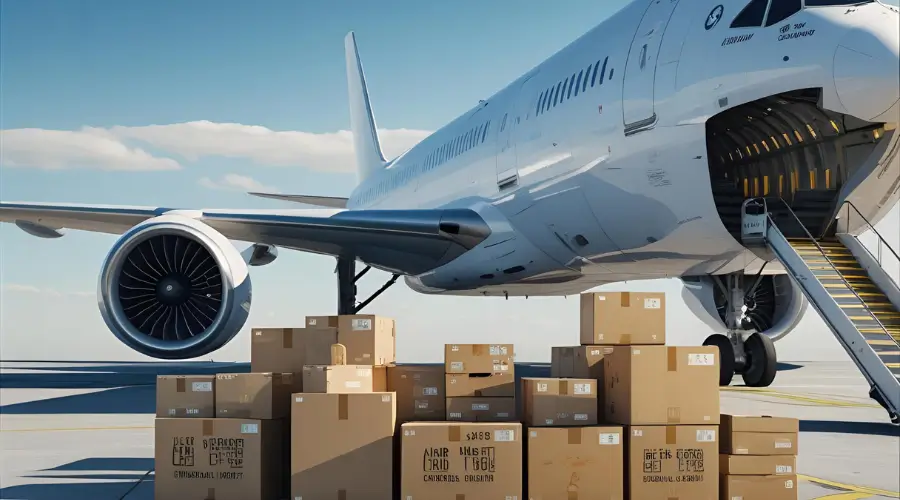
If your air freight invoices are consistently higher than expected, there's one crucial factor you may be overlooking: the IATA volumetric (or dimensional) weight calculation — a global billing standard used by nearly all airlines.
While most shippers focus on gross or actual weight, airlines apply space-based pricing rules standardized by IATA. This often leads to higher chargeable weights, especially for shipments with large cubic volume but low density.
Key takeaway: To protect your profit margins, you must understand how IATA volumetric weight rules work, how divisor values vary across carriers, and how to integrate tools like our Volumetric Weight Calculator into your quoting process.
This guide goes beyond the basic formula to explore the logic, history, and real-world impact of volumetric billing.
👉 Avoid overpaying — try our free Volumetric Weight Calculator now.
1. Why IATA Set a Global Volumetric Standard
Unlike ocean freight—where weight is rarely a constraint—air cargo is severely limited by both weight and space. Airlines must monetize every cubic meter effectively.
Before IATA established a standard, each airline had its own formula for billing large-volume cargo, creating confusion and inefficiency for freight forwarders and shippers.
Pre-IATA Problem: One airline might treat 1 CBM as 200 kg; another might use 250 kg.
IATA's Solution: A universal formula to allow predictable, standardized quoting across global routes.
Thus, the famous 6000 divisor was introduced and remains a benchmark in modern Volumetric Weight Calculators.
2. Why Divisors Differ — and Why We Use 6000 Only
While IATA recommends a standard volumetric divisor of 6000, not all carriers follow this exactly. Some courier services or budget air freight providers apply their own divisors based on operational factors like aircraft size or cargo density.
Examples of common industry divisors:
| Carrier Type / Service Level | Typical Divisor |
|---|---|
| Standard Air Freight (IATA) | 6000 |
| Express Couriers (DHL, UPS) | 5000 |
| Budget / Economy Services | 7000 (varies) |
Why do some airlines use lower divisors like 5000?
- Smaller aircraft → less available cargo space
- Premium routes with high space cost
- Lighter cargo density on specific trade lanes
These alternative divisors increase the volumetric weight, resulting in higher chargeable weight and higher costs for bulky but lightweight cargo.
⚠️ Note: Our Volumetric Weight Calculator is built for IATA-compliant air freight only, using the 6000 divisor. This is the most commonly accepted global standard for international cargo shipments.
To avoid surprises, always confirm with your carrier which divisor applies — but for most general air freight routes, 6000 is the rule.
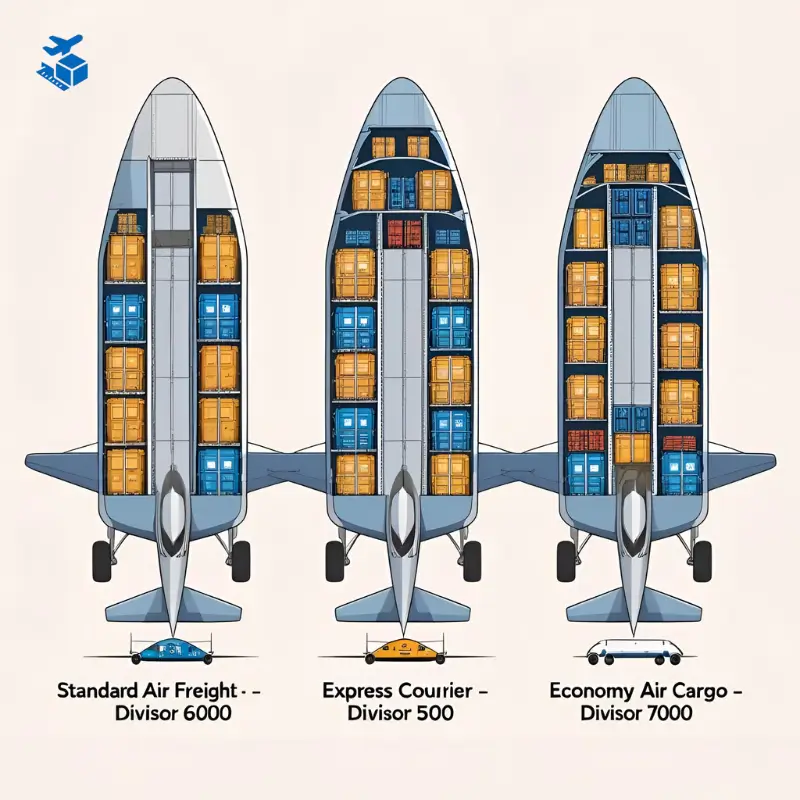
3. Volumetric Weight vs. Dimensional Weight
Many newcomers assume "volumetric weight" and "dimensional weight" are different concepts—but in practice, they refer to the same thing: calculating how much space a shipment takes up.
The key difference lies in terminology and industry context:
| Term | Commonly Used By |
|---|---|
| Dimensional Weight | Couriers and parcel carriers (e.g. DHL, FedEx) |
| Volumetric Weight | Air freight, cargo, and logistics providers |
While both use the same formula structure, air freight typically follows IATA's standard formula:
Volumetric Weight (kg) = (Length × Width × Height in cm) ÷ 6000
⚠️ Note: Unlike some courier services that may use a different divisor, our calculator is tailored for standard air cargo shipments using the 6000 divisor—the industry standard for most international air freight.
By understanding both terms and using a dedicated Volumetric Weight Calculator, you can ensure precise chargeable weight estimates, avoid misquotes, and optimize freight costs effectively.
4. Hidden Impact of IATA Rules on Your Supply Chain
Volumetric calculations aren't just for accounting. They directly affect:
✅ Route planning
High-volume items may shift from air to ocean or rail.
✅ Inventory strategies
Smarter packaging design lowers chargeable weight.
✅ Carrier negotiations
Large-volume shippers can negotiate custom divisors.
Example: A freight forwarder shipping lightweight goods (e.g. sneakers) might consolidate two days of shipments into one flight to reduce volumetric weight charges.
For e-commerce brands, optimizing packaging to reduce space can be the difference between profit and loss on international routes.
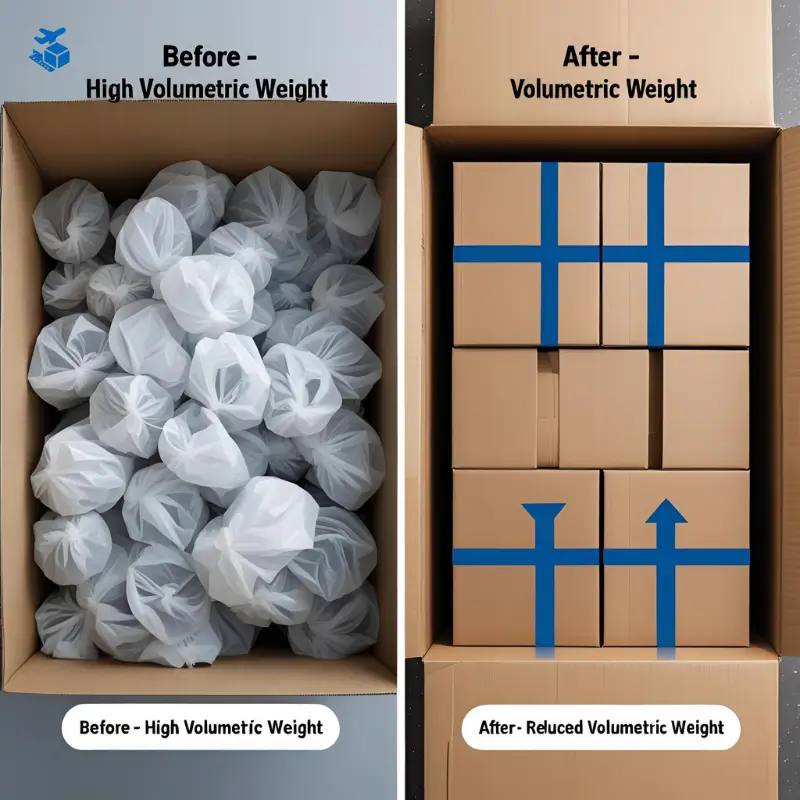
5. How IATA Rules Are Evolving
The core volumetric formula hasn't changed, but the environment around it is shifting rapidly:
✅ Sustainability mandates
Airlines want to eliminate wasted cargo space and improve emissions metrics.
✅ Dynamic pricing
Divisors may vary by route, season, or aircraft.
✅ Automation
Many TMS platforms now integrate volumetric calculators.
✅ AI-based pricing
Some carriers use real-time capacity data to adjust rates.
✅ E-commerce pressure
Surge in low-density goods is driving stricter volumetric enforcement.
Shippers relying on outdated spreadsheets risk costly surprises. Automation is no longer optional—it's strategic.
6. Common Misconceptions About IATA Volumetric Weight
Misunderstanding IATA volumetric rules can lead to costly errors in freight quotes. Let’s correct some of the most common myths:
| Misconception | Reality |
|---|---|
| ❌ "Volumetric weight is optional." | Volumetric weight is a mandatory billing method for air cargo — enforced across nearly all carriers. |
| ❌ "All airlines use 6000." | Most standard air freight uses 6000 (per IATA), but express couriers like DHL or FedEx often apply 5000. |
| ❌ "IATA rules don’t apply to e-commerce." | Incorrect. All air freight — including B2C e-commerce shipments — is billed using volumetric principles. |
| ❌ "Small packages aren't affected." | Even light items with large volume can trigger high volumetric charges, regardless of actual weight. |
✅ Key things to confirm before booking air freight:
- The divisor used by your carrier (standard air freight is 6000)
- Whether your carrier uses the term “volumetric” or “dimensional” weight
- Any applicable surcharges for bulky or low-density cargo
Our Volumetric Weight Calculator uses the IATA-standard 6000 divisor — helping you avoid misquotes and protect your profit margins.
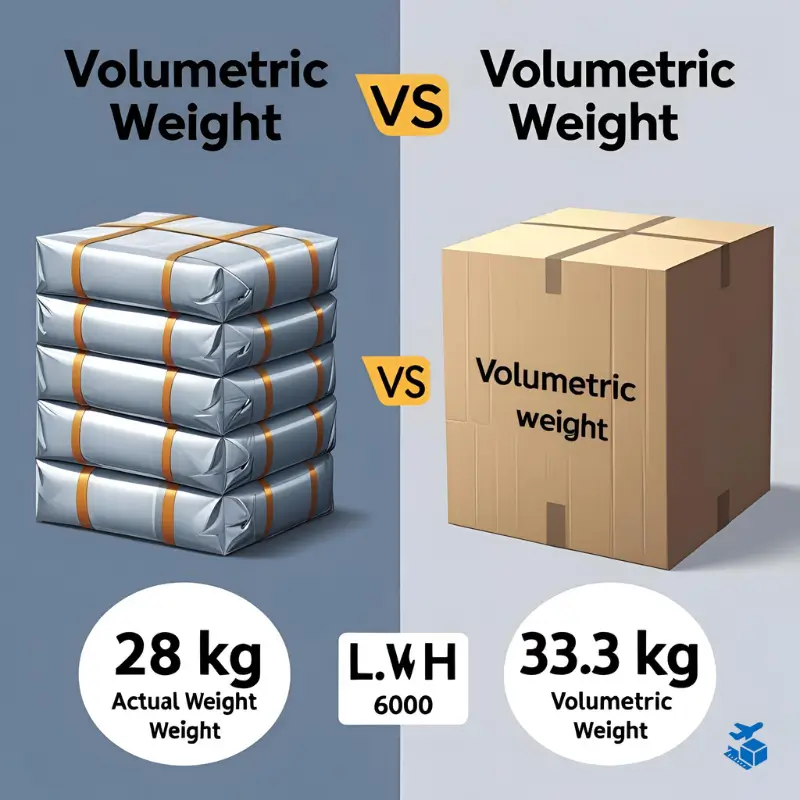
7. Why a Volumetric Weight Calculator Matters
Airlines publish base rate sheets (e.g. $4.50/kg), but those rates only apply when based on the correct chargeable weight—which is the higher of actual or volumetric weight.
Our Volumetric Weight Calculator is designed specifically for standard IATA-compliant air freight, using the globally recognized 6000 divisor.
Here's what it helps you do:
- ✅ Automatically calculate chargeable weight using the 6000 divisor
- ✅ Instantly compare actual vs. volumetric weight side by side
- ✅ Avoid manual errors and misquotes on volumetric-heavy shipments
- ✅ Use it as part of your quoting and cost control workflow
By relying on this calculator, freight forwarders, shippers, and logistics teams can quote confidently, avoid costly surprises, and protect their profit margins.
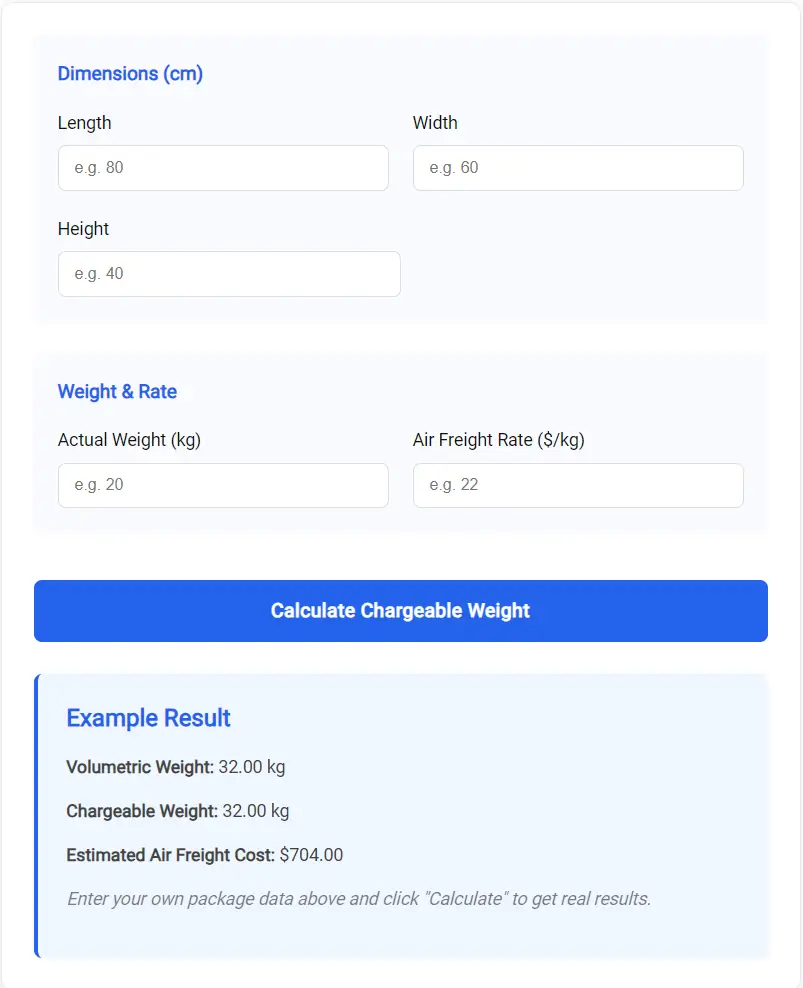
👉 Want to know your savings? Use our Volumetric Weight Calculator.
Frequently Asked Questions
1. Why is 1 CBM considered 167 kg in air freight?
Because 1 CBM equals 1,000,000 cm³, and the IATA standard divisor is 6000: 1,000,000 ÷ 6000 = 166.67 kg, usually rounded to 167 kg. This conversion helps standardize billing for air cargo based on volume.
2. What's the difference between volumetric weight and freight density?
Volumetric weight is used for billing—it reflects the space a shipment occupies. Freight density, on the other hand, is a physical measurement (kg/m³). Low-density items often trigger volumetric charges, while high-density ones are billed by actual weight.
3. Can I choose a different divisor for volumetric weight calculation?
No. For standard international air freight, the IATA divisor of 6000 is the industry benchmark. While some express couriers use other divisors, our calculator strictly follows the 6000 rule to ensure compatibility with most airlines.
4. How do I calculate volumetric weight from CBM?
Use the IATA conversion formula: Volumetric Weight (kg) = CBM × 167 This assumes the 6000 divisor and helps you quickly estimate chargeable weight based on volume.
5. How do UPS and FedEx calculate dimensional weight?
They typically use a different divisor—usually 5000—for smaller parcels and express shipments. Note: Our calculator is tailored for air cargo shipments using the IATA 6000 standard, not for parcel courier rates.
6. How do I convert centimeters into CBM (cubic meters)?
Use this simple formula: CBM = (Length × Width × Height in cm) ÷ 1,000,000 This is essential when comparing shipping costs across air, sea, or rail freight.
Final Thoughts
Understanding IATA volumetric weight rules isn't optional—it's essential for any business managing air freight.
By leveraging tools like our Volumetric Weight Calculator, you'll gain:
- ✅ Transparent, competitive quotes
- ✅ Fewer billing surprises
- ✅ Strategic control over routing, packaging, and margin
Airlines bill you for the space your cargo occupies—not just the kilos it weighs. Get ahead by embedding volumetric logic into your freight strategy today.
By mastering these calculations and leveraging tools like the Volumetric Weight Calculator, you'll ensure your shipping budget stays under control, your clients stay happy, and your business remains competitive in the fast-paced world of global logistics.
Related Articles
- Chargeable Weight in Air Freight: Quick Answer & How to Save
- Volumetric Weight vs Actual Weight in Air Freight Explained
- How to Calculate Volumetric Weight for Air Freight Easily
👉 Try our free Volumetric Weight Calculator now and ship smarter.
